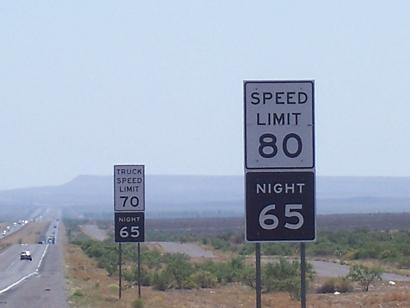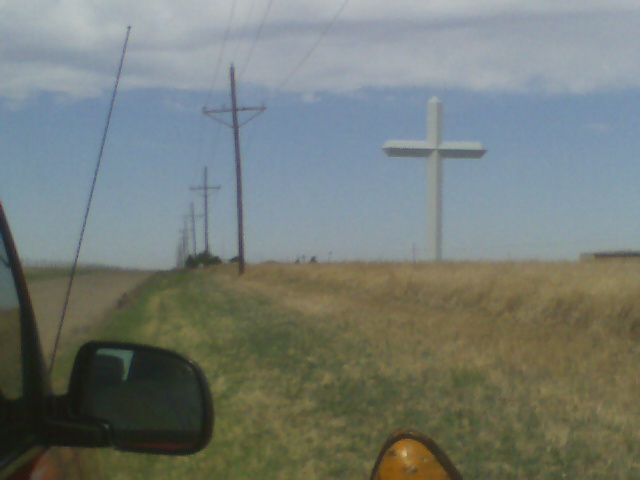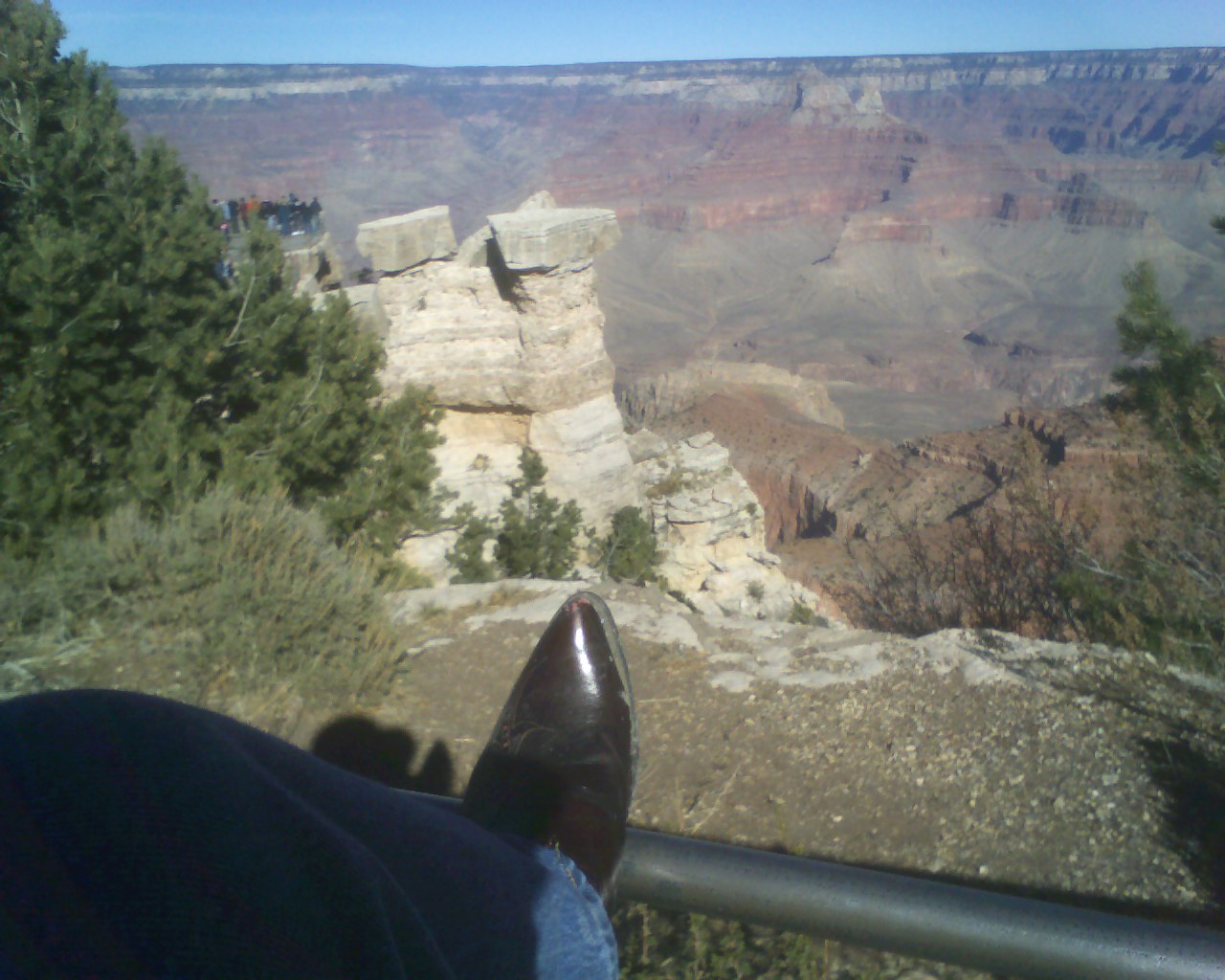 Thanks for all the guesses about where I was in yesterday’s mystery photo. I hadn’t heard of most of the other giant crosses that folks mentioned.
Thanks for all the guesses about where I was in yesterday’s mystery photo. I hadn’t heard of most of the other giant crosses that folks mentioned.
The answer is that I was at the giant cross in Groom, Texas–population 587 (Saaaaaa-lute!).
The Groom cross site advertises itself as the world’s biggest cross (which it was, though another town has apparently built one that is 8 feet taller now) and also "A religious experience like no other!"
The latter is a tag line you see on a roadsign on I-40 to get you to stop at the cross, which is run by the innocuously named "Cross Ministries" (a.k.a. Cross Of Our Lord Jesus Christ Ministries).
What happens when you stop and get out of your vehicle is that you find there is a whole bunch of stuff at the cross. In fact, once you get there the real focus ceases to be on the giant cross itself, which comes to seem more like something impressive and visible from the roadside (from miles away!) designed to get you to stop and see the real religious content of the site.
Most of that religious content consists of life-sized statues forming the Stations of the Cross (above), though there are also other items, like a large plaque of the Ten Commandments with Jesus’ commandment to love at the bottom of it and a life-size replica of the Shroud of Turin and a life-size Empty Tomb (with an angel in it) and a pro-life memorial with Jesus holding a tiny, aborted baby in his hand.
Now, "Cross Ministries" is a name that sounds very interdenominational, and it’s nice to see an interdenominational group including something as Catholic as the Stations of the Cross (especially in the form of life-sized statues).
Only as you start working your way around the stations, you start suspecting that this group isn’t as interdenominational as it seems.
There are certain Catholic touches. . . . like when right before you get to the statues depicting the Crucifixion, you have to walk past another statue of Jesus celebrating the Eucharist at the Last Supper, emphasizing the link between the Cross and the Eucharist. And then there are these plaques on the ground explaining what the statues are, with Bible verses for you to meditate on, and the plaques around the Eucharist statue are all Bible verses emphasizing the Real Presence.
And for the Fourth Station (Jesus Meets His Mother, Mary) one of the Bible verses on the plaque is from Revelation 12.
And one of the plaques on the way to the gift shop (after you finish doing the stations) is titled "Pillar of Truth" and cites 1 Timothy 3:15.
And right in front of the gift shop is a huge fountain with a statue of Jesus and the plaque says "Divine Mercy Fountain," and the statue of Jesus is posed just like he is in the Divine Mercy devotion (only he doesn’t have rays of light streaming from his chest).
And in the gift shop there are not only tons of the kind of gift items (not books) that you’d find in a Protestant bookstore, there are also Divine Mercy posters (with the rays of light) and pictures of Mary and books by Cardinal Ratzinger and pictures of John Paul II and Pope Benedict.
Given the "Pillar of Truth" references that crop up more than once at the site, I half expected to find copies of Pillar of Fire, Pillar of Truth in the gift shop (which would have been cool, since I’m a co-author of that booklet), but I didn’t. I’ll have to contact the folks who run the site and see if they’d like me to send them some.
But all the Catholic stuff is doesn’t stop Protestants from being able to find meaning in this.
While I was there I spoke with a black lady truck driver from L.A. who had stopped and who gave every sign of being Protestant, yet who agreed with me when I said how much I liked the fact that they included the Stations of the Cross.
And then on the wall in the gift shop there’s a photo of Charlie Daniels (who is Protestant as far as I can tell, though he has Catholic-friendly themes in his songs sometimes, as in his "El Toreador" song) that the singer has autographed to the guys who run the site.
So I was really impressed!
Not only was the site moving to me as a Catholic, but it is intriguing and non-in-your-face enough that many Protestants will find meaning in it, too.
What a wonderful way to help Protestants driving by on I-40 to stop and have a spiritual experience that puts them in touch with aspects of Christian spirituality that they otherwise would never experience.
Kudos to Cross Ministries!
Incidentally, I got pictures of the whole site and may do a web presentation on it for those who can’t make the trip to Groom–if there’s sufficient interest in that (and if I could get some help splicing and sizing the photos for the web).
MORE ON CROSS MINISTRIES.










